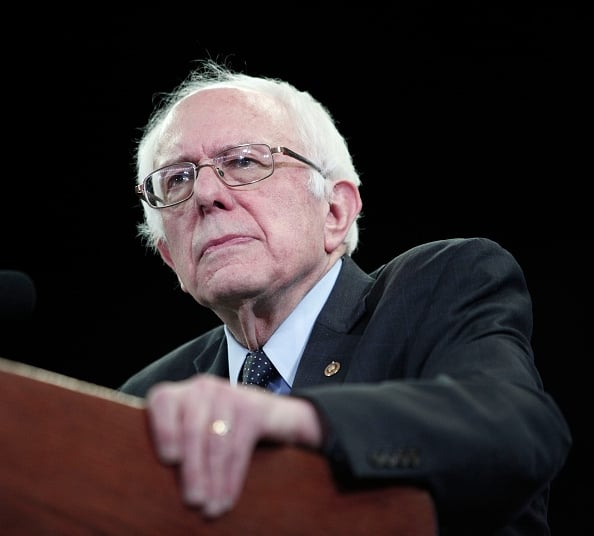You have /5 articles left.
Sign up for a free account or log in.

Senator Bernie Sanders
Getty Images
We have recently witnessed the introduction of a growing number of diverse plans for free public college. But what we’ve not seen -- and what must be done -- is to determine a set of criteria to judge the effectiveness and the viability of these various financial aid models.
A major concern is that some of the new programs do not appear to have a sustainable funding source, and many do not look closely at the relation between state support for financial aid and state support for campus funding. Moreover, if we enter another recession, and state revenues fall again, free college programs will be in significant jeopardy.
Another problem is that most of the proposed and enacted plans focus on making tuition free and do not take into account the total cost of attendance. The issue with this approach is that nontuition expenses -- room, meals, books, transportation and the like -- often make up the majority of the cost and are a leading reason for student debt. The best plans, then, should pay for the total cost of attendance and seek to focus on the students who need the most help. Unfortunately, however, most politicians and pundits only talk about tuition costs, and that creates a distorted view for the public.
Many plans also rely on an increase in state support for financial aid, but this approach could function to crowd out the already decreased state support for general funding -- or the money that goes to pay for the salaries of faculty and staff members and other vital infrastructure costs. For instance, if a state currently spends $500 million on financial aid and $1 billion for direct funding, what happens if the financial aid costs go up to support free tuition? And if more students are induced to attend, but institutions have less money to pay faculty members, what will happen to the quality of instruction?
It is important to ask such funding questions now. In the past, whenever states suffered from a lack of tax revenue, they have reduced their appropriations for higher education because they know the institutions can make up the difference by increasing tuition. In this system, state budget cuts to support higher education are partially made up for by increases in financial aid. But during a financial downturn, pressure is placed on all support for higher education, since many other government programs are mandated by law or popular initiative, and states cannot run a deficit or print more money.
Although many local and state free college programs have not identified a new revenue stream to support their programs, they will have to consider developing other revenue sources or passing new taxes to remain sustainable. Moreover, these free college plans must not only have enough financial support but also act to contain and control rising costs. While many people think that the solution to this problem is to reduce the number of faculty members or to move instruction online, colleges and universities have already decreased instructional costs by turning to large lecture classes and non-tenure-track faculty. Further, as I stated above, much of the reason for student debt involves nontuition costs, and so policy makers, institutions and concerned citizens have to take a serious look at the rising amount of money spent on housing, dining, parking, health care and amenities.
As I argued in my book Why Public Higher Education Should be Free, we not only have to control noneducational costs, but we also have to focus on improving the quality of instruction and basic research. So far, most of the free college plans have focused on financial aid and mentoring, but they have not been centered on a more holistic approach to controlling costs and improving instructional quality.
A rare exception to this problem is Senator Bernie Sanders’s 2015 plan proposed in Congress, which called for providing “an assurance that not later than five years after the date of enactment of this act, not less than 75 percent of instruction at public institutions of higher education in the state is provided by tenured or tenure-track faculty.” That push to have more tenure-track faculty reveals a desire to protect the quality of instruction and research. But a more realistic and effective goal would be to have at least 75 percent of all courses taught by full-time faculty, whether on the tenure track or not, with academic freedom, shared governance rights and job security.
Sanders also proposed making sure that more money ends up in the classroom. His plans would require a state that receives a grant to use any remaining funds and any matching funds “to increase the quality of instruction and student support services by:
- Expanding academic course offerings to students.
- Increasing the number and percentage of full-time instructional faculty.
- Providing all faculty with professional supports to help students succeed, such as professional development opportunities, office space and shared governance in the institution.
- Compensating part-time faculty for work done outside of the classroom relating to instruction, such as holding office hours.
- Strengthening and ensuring all students have access to student support services such as academic advising, counseling and tutoring.
- Any other additional activities that improve instructional quality and academic outcomes for students as approved by the secretary through a peer-review process.”
Sanders's plan was thus not simply a model of eliminating tuition costs for students. Rather, he sought to guarantee that not only would students be able to afford higher education but their education would also not be cheapened or short-changed.
It is commendable that so many states and local institutions are trying to make higher education more accessible. But we do not simply want more students to attend: we want them to learn and earn degrees. Since it does not look like the federal government will be much help here, state policy makers will have to come up with comprehensive plans that raise new sustainable revenues as they motivate institutions to spend money on the right things.








